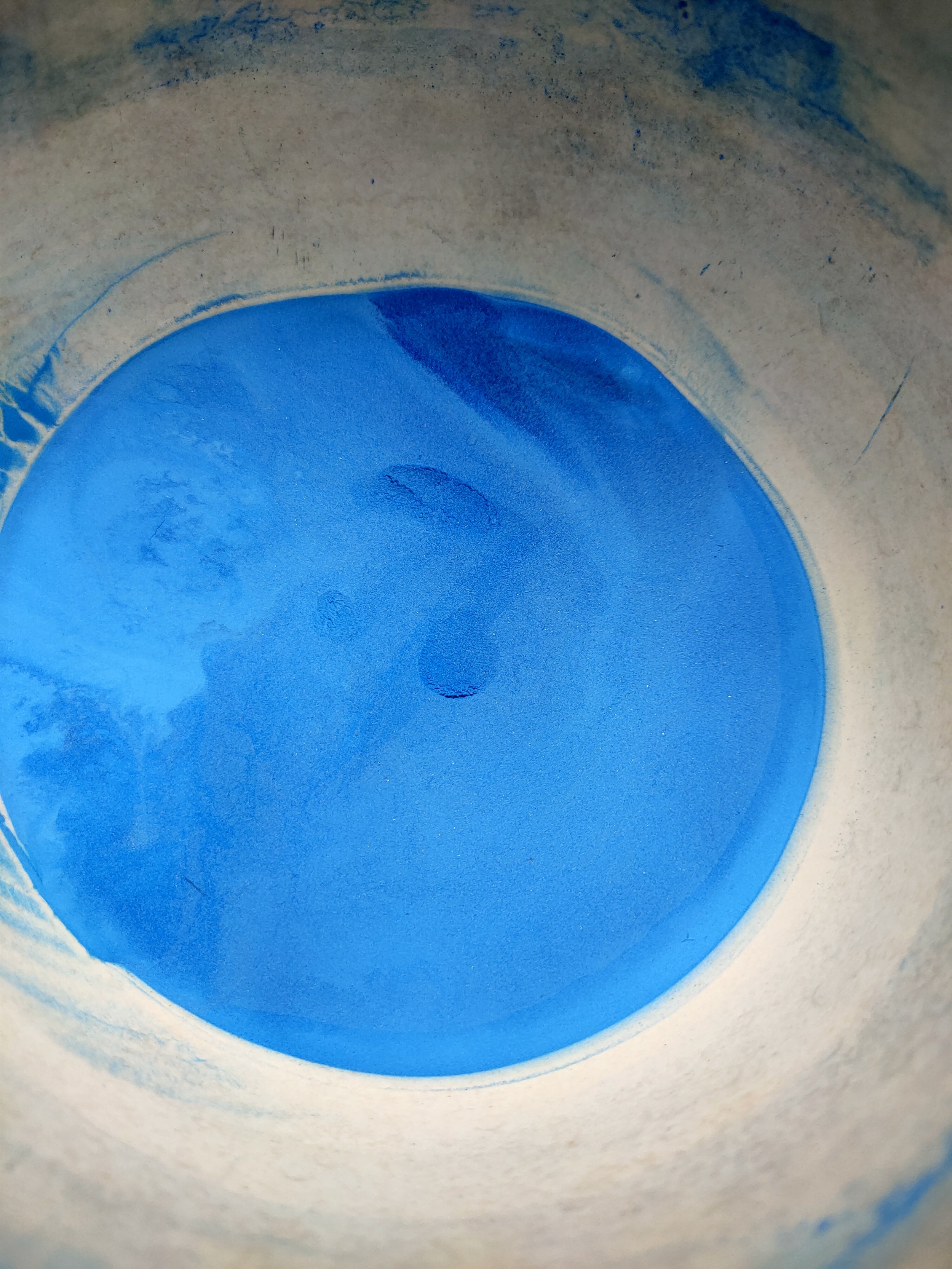Pigment Making
Working with natural pigments is a cornerstone to my practice. Illuminated manuscripts of old were rendered to breathtaking precision using a palette of colours derived from rocks, minerals, clays, plants and insects. The most extensively used pigments for such manuscripts were gold and lapis lazuli, with malachite, cinnabar, red and white lead and lamp black also common.
Gold pigment is achieved by grinding gold leaves into a fine powder, often entailing hours of work, before being mixed with a binder such a gum arabic or gelatin to make a pigment. Lapis lazuli, malachite and cinnabar are obtained from first breaking down large pieces of rock into smaller sizes, and then grinding it down until a fine powder is achieved, before being levigated, washed and refined. Similarly, earth-based colours such a terra verde and ochre are filtred and washed to obtain the desired pure pigment, and lamp black is rendered from soot collected from oil-burning lanterns.
The process of preparing pigments from their most pure origins is one of patience, dedication and precision, which results in colours of unmatched quality and beauty.





